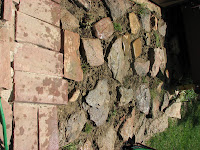
Concord grape juice contains high levels of flavonoids that have been shown to have antioxidant activity in the test tube. A study from the University of Texas compared the antioxidant power of concord grape juice to that of vitamin E and found both had similar antioxidant abilities within the body, specifically towards low density lipoprotein (LDL) also known as “bad cholesterol”. Oxidation of LDL is thought to be an early step in the formation of atherosclerosis.
A group of 36 patient volunteers participated in this study. To make sure all participants were on a standardized diet as far as dietary flavonoids were concerned, volunteers were first put on a low flavonoid diet for two weeks and remained on that diet for the duration of the study. After two weeks, volunteers were randomized to receive either 400 IU of alpha-tocopherol or 10 milliliters of concord grape juice per kilogram of body weight daily. This amounts to approximately 700 ml of grape juice per day for an average sized person or less than one quart (24 ounces). Since the authors of the study had already determined that 400 IU of vitamin E was enough to decrease LDL oxidation, they used that amount to compare with concord grape juice.
After two weeks of supplementation blood samples were taken for analysis. Both supplements were well absorbed which was demonstrated by significant increases in flavonoids in the blood of the grape juice group and significant increases in blood levels of vitamin E over baseline in the vitamin E group. Both groups showed significant decreases in the oxidation rate of LDL, by approximately 10%. This suggests a protective effect for both supplements in regards to atherosclerosis, something that has already been documented for vitamin E.
Grape juice had an additional antioxidant effect as well. Grape juice but not vitamin E demonstrated significant antioxidant protection in the plasma with a 20% decrease in oxidation of plasma proteins. The diverse nature of flavonoids allows them to dissolve in both water as well as an oil or lipid environment. Vitamin E on the other hand is only soluble in oil environments. This may give grape juice flavonoids an advantage to provide additional antioxidant protection to water environments such as the plasma.
One draw back, patients supplemented with grape juice also increased their triglyceride level during the two-week study. The authors suggest that this was a transient effect that would not be important in healthy individuals but may be a concern with diabetic patients or patients with already high triglyceride levels.
Flavonoids found in grape juice include catechin, epicatechin, quercetin and anthocyanins. Some of these flavonoids are readily found in other fruits, vegetables and herbs as well. This is good news for those who don’t drink wine and yet want the antioxidant benefits associated with it. However, if you do drink wine, you can get these benefits from red wine as well.
A version of this article was previously published in Herbs for Health Magazine.
http://www.herbcompanion.com/health/natural-healing-improve-heart-health-with-concord-grapes.aspx
Ref: O’Byrne DJ, Devaraj, S, Grundy SM, and Jialal, I., Comparison of the antioxidant effects of Concord grape juice flavonoids and alpha-tocopherol on markers of oxidative stress in healthy adults. Am. J. Clin. Nutr. 2002; 76:1367-74.
In general it is thought that high nutrition foods are better than supplements probably because they contain a wide variety of nutrients rather than one isolated in a supplement. With this being the season for thinking about what to grow come spring, perhaps grapes would be a good choice!










































